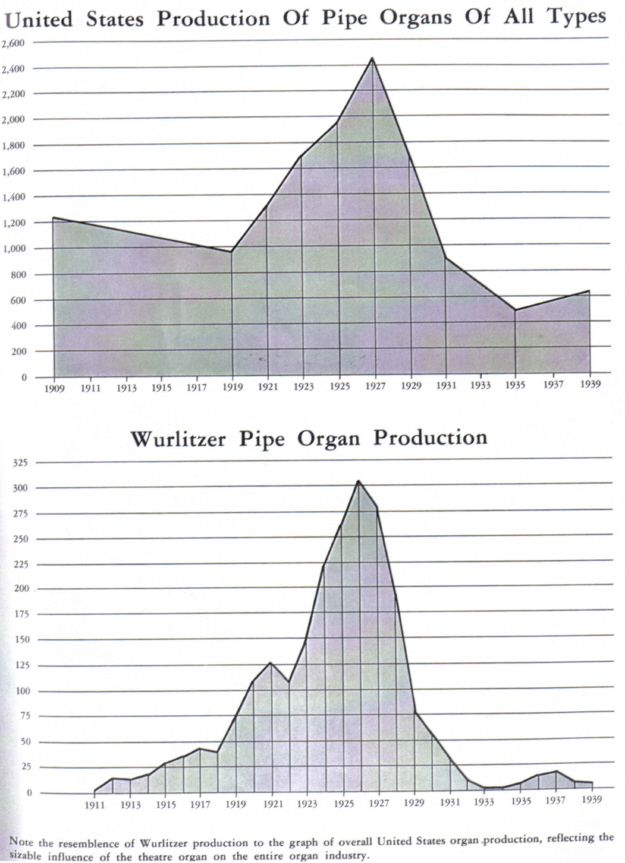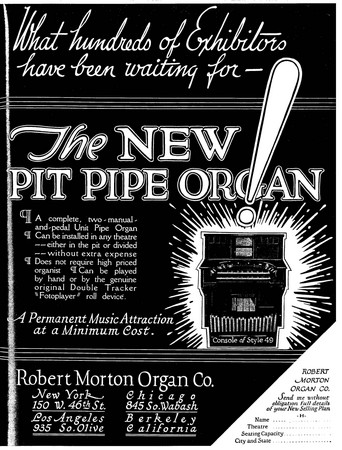The flip side to the advancements in the film industry was that the movie houses which showed these films suddenly had things they no longer needed, specifically a house orchestra and/or an organ (and of course an organist). The house orchestra was the original musical accompaniment to the films, then the invention of the theater organ and its ability to mimic the different voices of the orchestra (including percussion) became popular and began to displace the house orchestra. But now, not even the organ would be needed.

To the right is a graph from the book "Encyclopedia of the American Theatre Organ - volume 1", by David L. Junchen, p. 21. As the top graph clearly shows, pipe organ production (of all types) peaked right around the time the Ohio's Morton organ was installed. Then with the introduction of music soundtracks and "talkies", the need to equip movie houses with pipe organs was gone. Other factors such as the Great Depression undoubtedly also helped in the downward trend after 1929. It is hard to fathom that over 2,400 pipe organs of all types were produced in 1927!
The bottom graph showing Wurlitzer pipe organ production is simply staggering. Wurlitzer was by far the number one producer of theater pipe organs turning out well over 2,000 instruments. By comparison, number two builder Robert Morton built just under 900 theater organs (ibid, p. 20). In 1926 the chart shows a peak of just over 300 organs produced by Wurlitzer, then three short years later in 1929 the total is 75, and basically nothing in 1933.
With the theater organ market bottoming out, organ builders had to come up with new lines of business for their product. Home installations provided some business (albeit on a very small scale), but work was hard to come by. Robert Morton even built an organ for a car dealership showroom! What better way to pass the time while the salesperson goes away "to run this offer by the manager" than to listen to a happy tune on the organ.
Some builders
were
successful in
producing for the classical (church)
market, but builders Wurlitzer and Robert Morton were not. Like other
builders, many of their theater organs ended up in churches via the
secondhand market. As theaters removed the organs from their buildings,
churches picked up the instruments and installed them in their houses
of worship probably for a fraction of the cost of a new instrument. The
scaling and voicing probably was not ideal for a church, but function
won out over form in this case. A handful of these theater organ
transplants remain in churches still today.
